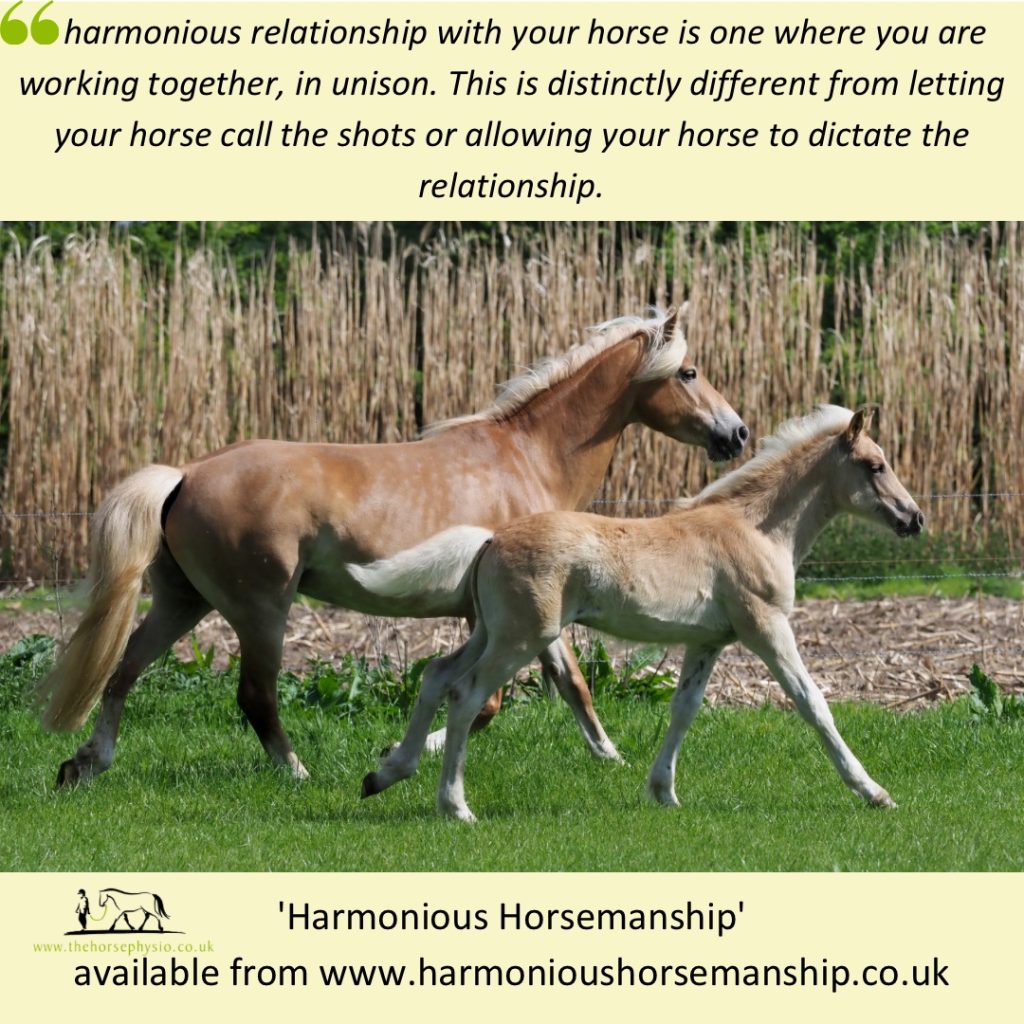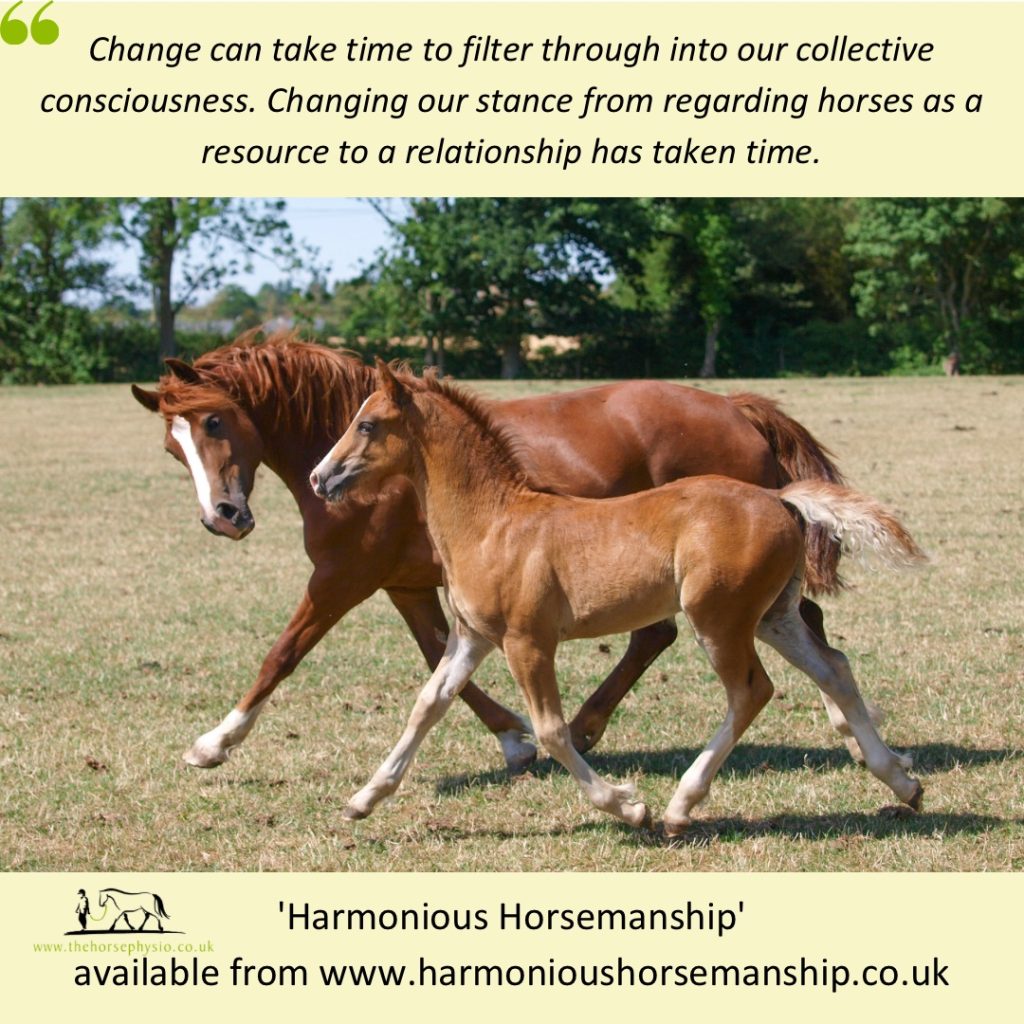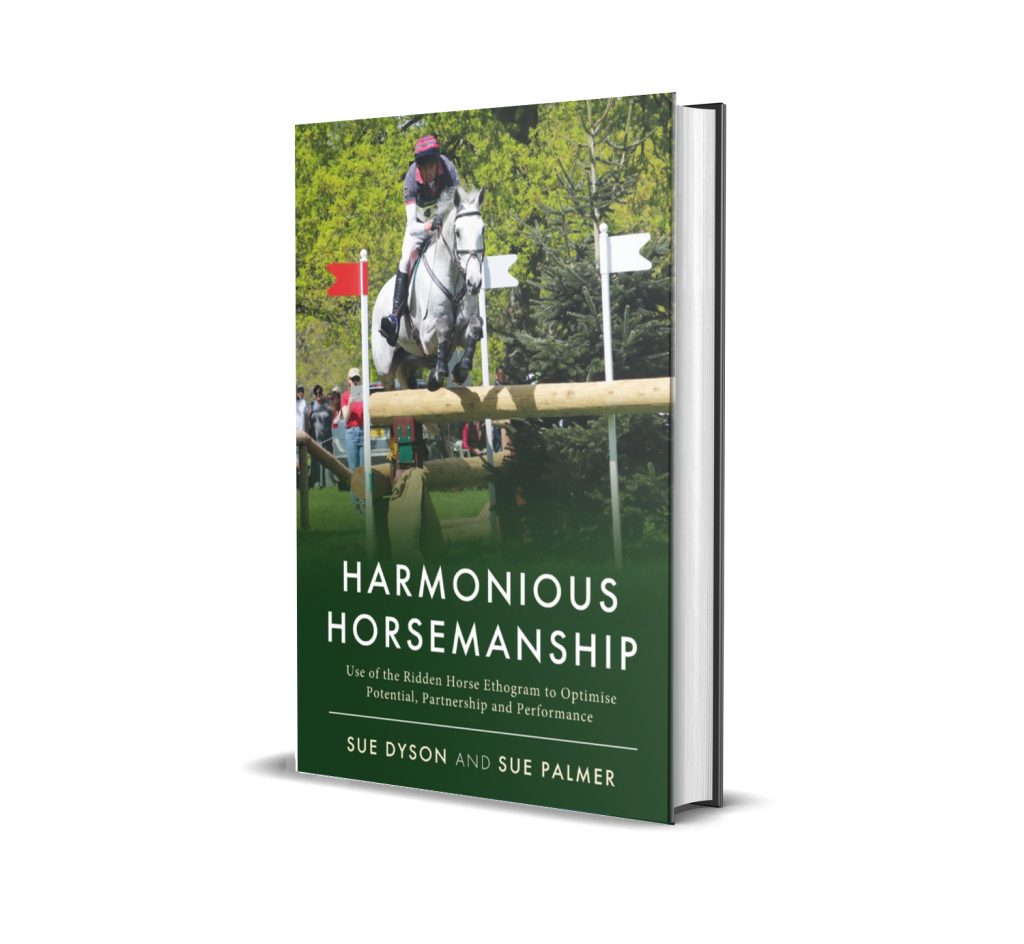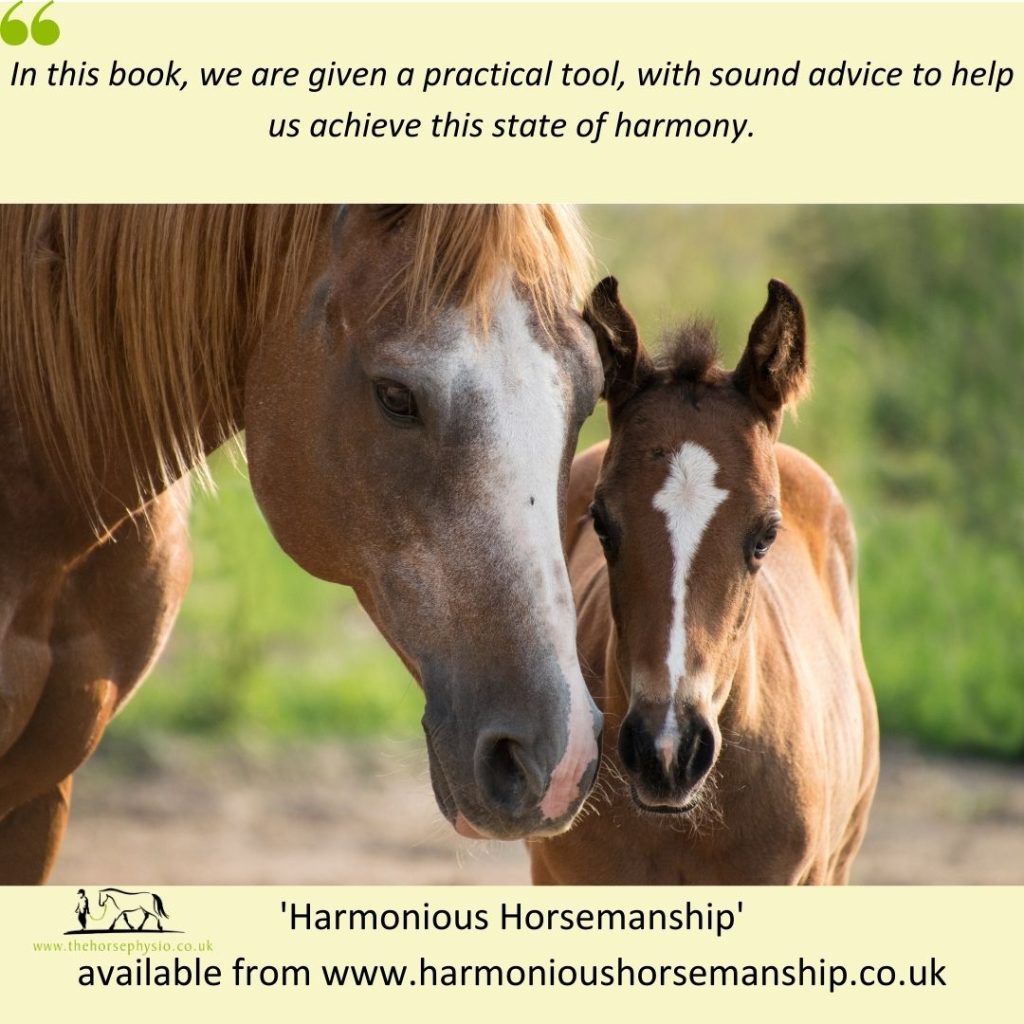Harmonious Horsemanship gives you the tools to achieve harmony
We all desire a balanced relationship, but it can feel like an elusive state that we are constantly chasing. In this book, we are given a practical tool with sound advice to help us achieve this state of harmony.
But what is harmony?
The Oxford Dictionary defines harmony as “the state of being in agreement or concord.” So, a harmonious relationship with your horse is one where you work together in unison. This is distinctly different from letting your horse call the shots or allowing your horse to dictate the relationship. When we are in harmony with our horse or a human, we feel that we are on the same path, that there is no resistance, and that we are attuned. This is the sensation that we are aiming for when we talk about harmonious horsemanship. Hacking across the common, you are watching your horse’s ears as they flicker, taking in the sights and sounds, as he watches the birds rising from the bracken and catches the scent of a nearby farm as the wind rolls across the slope. You are listening and caring; you are attuned to him; this is harmony. Or approaching a jump, you can feel the eagerness beneath you, the equal power pushing through the hindlegs, the lift through the shoulders, the sensation of energy in the reins, the vitality of health as he pushes off from the ground; this is harmony.

How our relationship with horses has changed
Remember the famous opening line from the novel The Go-Between, “The past is a foreign country; they do things differently there.” This is a perfect reflection of the changing equestrian world. In the olden days, horses were seen as a tool or a resource; we even measured the power of engines in horsepower. In those days, we needed horses to function, so we looked after them, but it was so that they would do our bidding. Think of the language “breaking a horse”; this was always equated with subduing or breaking their spirit. There was nothing harmonious about our relationship with horses. They were a resource to be used to further our own needs and gains, for working the land, for transport, for war, and for wealth. Much of our equestrian heritage is rooted in the military. Our traditions are carried forward from a bygone time. Change can take time to filter through our collective consciousness. Changing our stance from regarding horses as a resource to a relationship has taken time. We are changing slowly but surely. Research, such as the Ridden Horse Ethogram performance checklist (the RHpE), is vitally important because it gives us the tools to help change our mindset.

How will the RHpE bring harmony?
Think of the last time that you hurt your back. Now, remember how you felt when someone asked you to do something. Did you react with positivity and enthusiasm? No. You responded grumpily because you were in pain. Horses have traditionally been labelled naughty for demonstrating pain-related behaviour; the Ridden Horse Ethogram performance checklist is changing this. If we can “read” our horse’s pain cues, we can learn that what historically has been thought of as “bad behaviour” is the horse’s way of communicating its pain to us. If we have a way to see and understand when our horses are in pain, we have an incredible framework from which to know what they are saying. When we use the RHpE, we can be confident that our horses are comfortable in their ridden work, leading us to a harmonious relationship. Equally, if the RHpE shows that our horse has musculoskeletal pain, we can investigate and treat the root cause. Our horse’s happiness will then increase, and we can achieve harmony with each other.
There is no quick fix.
Harmonious Horsemanship and the Ridden Horse Ethogram performance checklist is not a quick fix or a magic bullet. However, reading this book and learning to carry out the RHpE with your horse will increase the harmony you experience in your relationship with him. Harmony is a beautiful state that we should strive to achieve in our relationship with our horses and in life. If you are interested in enjoying a balanced relationship with your horse based on listening and understanding, not on dictating, then Harmonious Horsemanship and the RHpE will help. If you are struggling with the behaviour that your horse is exhibiting but don’t know how to interpret it, then you need the RHpE. If you want to improve your understanding of horses as a professional or leisure rider, then the RHpE is for you. To learn more about the RHpE and order your copy of Harmonious Horsemanship today, visit the website www.harmonioushorsemanship.co.uk.

